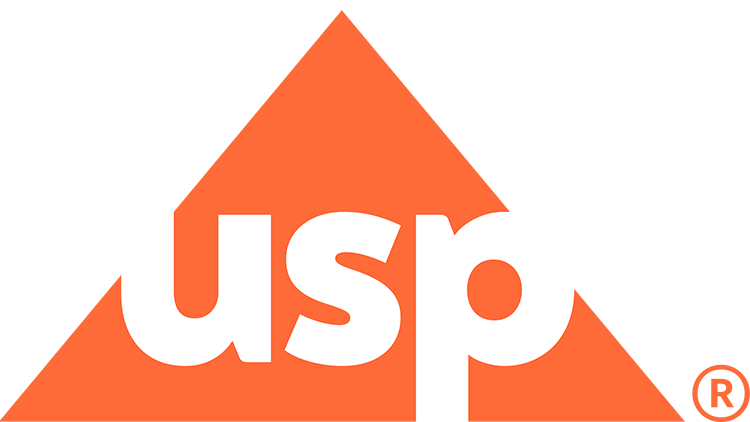
Long-Lasting Drug Shortages Highlight Fragile Supply Chains and Systemic Market Pressures

Key Takeaways
- Drug shortages persist due to systemic issues like low pricing, manufacturing concentration, and quality concerns, affecting patient care and pharmacy operations.
- Sterile injectables face high shortage risks due to low profitability and complex manufacturing, discouraging investment in quality improvements.
Drug shortages challenge US health care, driven by systemic issues like low pricing and manufacturing concentration, impacting patient care and safety.
Drug shortages remain one of the most pressing challenges facing the US health care system, with the vast majority carrying over from previous years. In the 2025 Annual Drug Shortage Report, experts at the US Pharmacopeia (USP) identified systemic drivers—including low pricing, manufacturing concentration, production complexity, and quality concerns—that continue to disrupt supply chains and compromise patient care. In this interview with Pharmacy Times, Marissa Bane Malta, MPP, senior manager of policy and government affairs at USP, discusses the persistent nature of drug shortages, their impact on pharmacies and patients, and what coordinated policy solutions may be needed to build long-term resilience.
Pharmacy Times: What percentage of current drug shortages in 2024 carried over from the previous year, and what does this imply about how quickly shortages are being resolved?
Marissa Bane Malta, MPP: Eighty-nine percent of the drug shortages experienced in 2024 carried over from 2023, with the majority of those being long-lasting, multiyear shortages. Long-lasting shortages underscore a need for more comprehensive and coordinated approaches, not only to prevent new shortages but also to resolve those that have persisted for years. When drug shortages go unresolved, patients, pharmacists, and communities all feel the impact.
The implication of this trend is that shortages typically have complex and varied causes, making them challenging to resolve quickly. It’s far more effective to implement policies and procedures that can preempt or mitigate shortages by strengthening medicine supply chains.
Pharmacy Times: Despite a decline in new shortages, what persistent systemic issues continue to drive long-term shortages, according to the report?
Malta: Several systemic issues continue to drive drug shortages - particularly the factors of low price, geographic concentration of manufacturing to a few nations, manufacturing complexity, and quality concerns. These issues work independently and interdependently to increase susceptibility to shortage.
Drug products with lower prices are commonly at risk of shortage. Here, price refers to the amount paid to a manufacturer, rather than the patient’s out-of-pocket cost. When prices are low, manufacturers face razor-thin margins, which can disincentivize manufacturers to remain in the market and/or invest in quality and redundancy practices.
Economic pressures in the market and specialization of products have resulted in production concentration in single locations. The risk of drug shortages is particularly high when manufacturers rely on specific regions for key starting materials (KSMs) or active pharmaceutical ingredients (APIs), as threats to these specific regions – whether they are natural disasters or trade restrictions – can limit the availability of ingredients and thus pause or halt production.
Manufacturing complexity introduces a range of challenges that can also lead to drug shortages. Complex processes may require specialized equipment, facilities, and often have longer production timelines – all of which can increase the cost of manufacturing these drugs and squeeze the margins for manufacturers further, increasing their likelihood of exiting the market. This is assuming that the specialized equipment, facilities, and personnel are available and accessible as needed. Additionally, complex processes increase quality control and compliance risks like contamination or batch failures – leading to delays, recalls, or warning letters that prevent drugs from reaching the market.
That leads us to quality concerns, the fourth driver of long-term shortages. When products do not meet quality standards, they are at risk of being delayed, recalled, or pulled from the market altogether.
These risk factors, often interrelated, exacerbate economic challenges for manufacturers of low-margin drug products. Without a coordinated effort to address these issues, long-term shortages will persist.
Pharmacy Times: The average duration of a drug shortage in 2024 was over 4 years. How might this affect patient care and formulary management in pharmacies?
Malta: More than 40 lifesaving drugs have been in shortage for over 3 years, with 5 of those drugs being in shortage for more than 10 years. These shortages impact patient health, safety, and health care costs, and have for years. Drug shortages can increase the rate of mortality, adverse events, medication errors, treatment delays, and out-of-pocket expenses.
Pharmacy Times: Which dosage forms were most commonly in shortage, and why might those forms (eg, sterile injectables) be more vulnerable? How might generic injectables pricing disparity disincentivize manufacturers?
Malta: Sterile injectable medicines are, by far, the dosage form most commonly in shortage. These drugs are typically priced under $5 per unit, making them not very profitable to produce. Razor-thin margins in the generics market can discourage manufacturers from continuing production or investing in quality improvements, ultimately making sterile injectables more vulnerable. Sterile injectables are also a relatively complex dosage form, compared to, for example, oral solids. Complex medicines have more components of their supply chain that can drive a shortage. It may not always be the active ingredient that’s in shortage; it could be a plastic casing or some other element whose supply gets disrupted.
Pharmacy Times: Which types of therapies were most affected by new shortages in 2024, and how might this influence treatment strategies across specialties such as oncology, pediatrics, or anesthesia?
Malta: New drug shortages in 2024 spanned a broad spectrum of therapeutic classes and disease areas, underscoring the widespread impact on patients. No single class was disproportionately affected, though endocrinology/metabolism led with 3 newly reported shortages, highlighting the effect new shortages have on specialties. USP has also recently analyzed which countries produce the active ingredients for the most widely used therapeutic classes (
Pharmacy Times: Five injectable drugs have been in shortage for over a decade. How do persistent shortages of drugs like lidocaine or fentanyl affect clinical operations and patient safety in acute care?
Malta: Persistent drug shortages delay care, increase costs, and multiply time allocated to finding alternatives – all of which affect clinical operations and put the patient’s safety at risk. Without substantial market incentives and intervention, these persistent drug shortages will only worsen and grow in number.
Members of the
Pharmacy Times: How does drug price correlate with shortage risk according to the 2025 report? What role do low margins play in the high rate of product discontinuation, particularly for oral solid medications?
Malta: There is a clear correlation between drug price and shortage risk, particularly for older generic products. Low-priced drugs are more vulnerable to shortage, as they yield thin profit margins that may disincentivize manufacturers from staying in the market or investing in production quality. In the generics market, manufacturers often engage in a "race to the bottom" on pricing – potentially at the expense of quality and long-term sustainability. This market dynamic ultimately fosters fragility in the supply chain, making it more vulnerable to disruption.
The Annual Drug Shortage Report found that nearly half of discontinued oral solid drugs were priced below $1 per unit. This pricing gap highlights how economic pressures – especially low reimbursement rates – can drive both market exits and supply instability.
Pharmacy Times: How does geographic concentration of manufacturing (eg, US facilities hit by Hurricane Helene) contribute to drug shortages?
Malta: Drugs in which the KSMs, APIs, or finished dose forms [FDF] are made in a single or few locations are at a higher risk of shortage. Overreliance on limited geographies for critical drug components makes the supply chain vulnerable to a range of disruptions, including domestic or geopolitical strife, regulatory shutdowns, and public health emergencies.
Prior to Hurricane Helene, Baxter’s Marion, North Carolina, facility was responsible for producing approximately 60% of the US supply of IV [intravenous] solutions. The storm severely damaged this site, causing a temporary shortage of products and highlighting the vulnerability of the drug supply chain when production is heavily concentrated in 1 location. It’s important to note that natural disasters are not the only way geographic concentration of manufacturing can threaten supply chain resiliency.
USP and the Drug Shortage Task Force advocate for policies and practices that can encourage geographic diversification of manufacturing (
New manufacturing capacity can benefit from the use of new technologies or alternative synthesis pathways for producing medicines and key ingredients. These so-called “advanced manufacturing technologies” [AMTs] can be less labor-intensive and thus more economically viable in countries like the US.
Pharmacy Times: With 66% of oral solid drugs in shortage made in the US and only 23% made in India, what does this suggest about the risks of domestic vs international manufacturing?
Malta: A higher percentage of oral solid drugs in shortage are manufactured in the US than in India – indicating that although domestic manufacturing can build resilience, it is not necessarily inherently more resilient or less risky than international manufacturing.
When discussing the "risks" of domestic vs international manufacturing, it’s important that reforms acknowledge the economic pressures in the generics market, which often guide generics manufacturers to less advanced economies and prevent them from investing in quality practices. High competition amongst generics manufacturers has created a "race to the bottom" pricing dynamic, in which manufacturers lower prices to increase their favorability in the marketplace. With lower margins often driving generics manufacturers out of the market, relying solely on onshoring is not a comprehensive solution.
Economic pressures have also created longer and more complex supply chains, often with production concentration and reliance on a single or small number of countries that provide markedly lower costs to produce large volumes of KSMs, APIs, and medicines for the US. Efforts to mitigate drug shortages and encourage domestic manufacturing must take all factors into account, as well as working alongside manufacturers.
Pharmacy Times: How do inspection outcomes (official action indicated [OAI], voluntary action indicated [VAI], no action indicated [NAI]) relate to shortage status, and why might OAI-rated facilities be a signal for proactive shortage mitigation?
Malta: Inspection outcomes play a significant role in drug shortage status, as they may reveal quality control issues like contamination that lead to voluntary or mandatory recalls, forcing manufacturers to remove the products from the market. If quality issues are identified earlier in the process, manufacturers may pause production to address inspection findings or prepare for the next inspection. For drugs or ingredients that are manufactured overseas, a poor inspection rating can trigger import alerts that may compromise access.
Facilities with OAI outcomes are significantly more likely to be associated with drug shortages. Between 2020 and 2024, facilities producing drugs in shortage were statistically more likely to receive OAI ratings than those producing drugs not in shortage. And the numbers are only increasing; OAI-rated facilities accounted for 5% of all drug shortage production in 2024, up from just 1% in 2023.
While OAI ratings do not causally predict drug shortages, they can serve as early warning signals for supply chain disruption and prompt proactive shortage mitigation. OAI ratings reflect serious compliance issues and vulnerabilities. By identifying facilities with OAI ratings early, stakeholders can proactively diversify their sourcing to stabilize supply.
Newsletter
Stay informed on drug updates, treatment guidelines, and pharmacy practice trends—subscribe to Pharmacy Times for weekly clinical insights.










